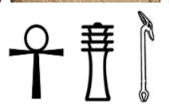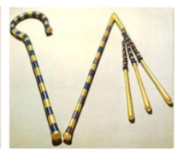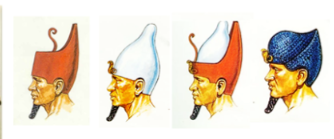Egyptian Art
1/13
There's no tags or description
Looks like no tags are added yet.
Name | Mastery | Learn | Test | Matching | Spaced |
|---|
No study sessions yet.
14 Terms
The Law of Frontality
. It was important that the face should look straight ahead into eternity and that the body viewed from the front should be vertical, rigid, bi-symmetrical, with arms held close to the body with all the planes intersecting at right angles, termed the “Law of Frontality”. Their left foot is often forward.
Bas-relief
where the figures project slightly from the background.
Sunken relief
where the background protrudes in front of the figures.
Outline relief
where only the outlines of figures are chiseled.
High-relief
where the figures project some distance from the background.
Book of the Dead
is a religious document that was used in ancient Egypt, usually to help the spirit of the concerned person to be preserved in the afterlife.
Rosetta Stone
The Stone became integral in decoding ancient Egyptian hieroglyphics. Found in 1799, inscribed within is a decree issued at Memphis in 196 BC on behalf of King Ptolemy V. The top and middle texts are in Ancient Egyptian using the hieroglyphic script and demotic scripts, respectively, while the bottom is in Ancient Greek
Lotus (Sesen)
represents the sun, creation, and rebirth.

Ankh, Djet, and Was
the ankh represented life; the djed stability; the was power.

The Eye of Ra (udjat)
symbolizes the watchful eye of Ra over creation.

Shen
is a circle of rope, knotted, to form an unbroken, circle symbolizing completeness, infinity, and serving as protection

Uraeus the Cobra
often found on the pharaoh’s headdress, the uraeus symbolized the absolute authority and power of the gods and the pharaohs.

Hekha and Nekhakha
the crook and the flail, were the symbol of the state’s power over its people and the king’s coercive power and control over his subjects.

Deshret, Hedjet, Pshent, and Khepresh
The crowns of Egypt in art also have distinct meanings and symbolism. The Red Crown (Deshret) symbolized Lower Egypt, the White Crown (Hedjet), Upper Egypt, and the red and white Double Crown (Pshent), a unified Egypt. Images of the king in battle show him in a blue crown (Khepresh), invoking the power of the Nile River and the heavens through its color.
